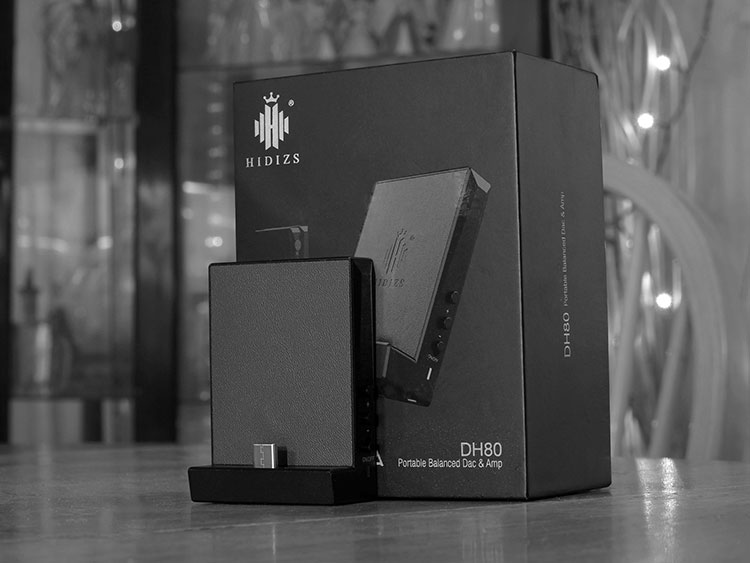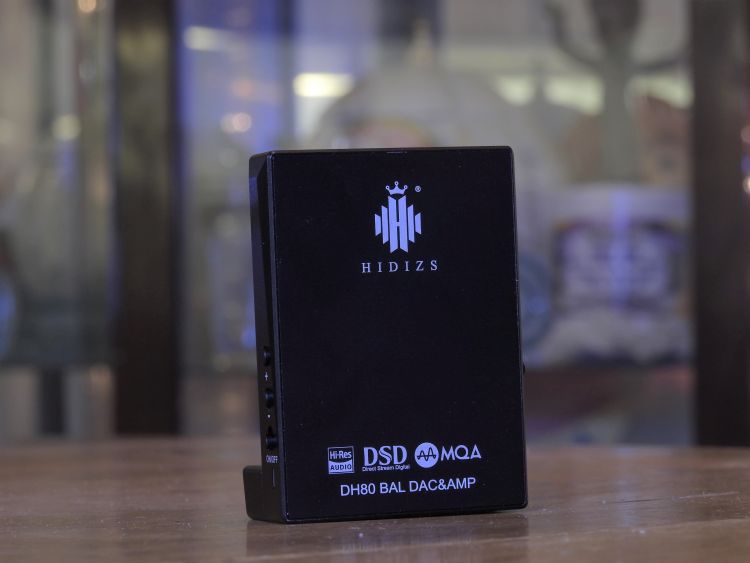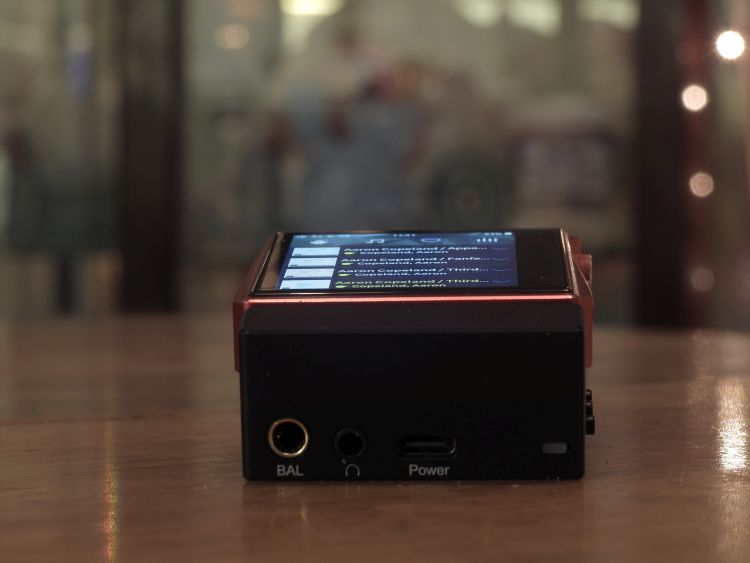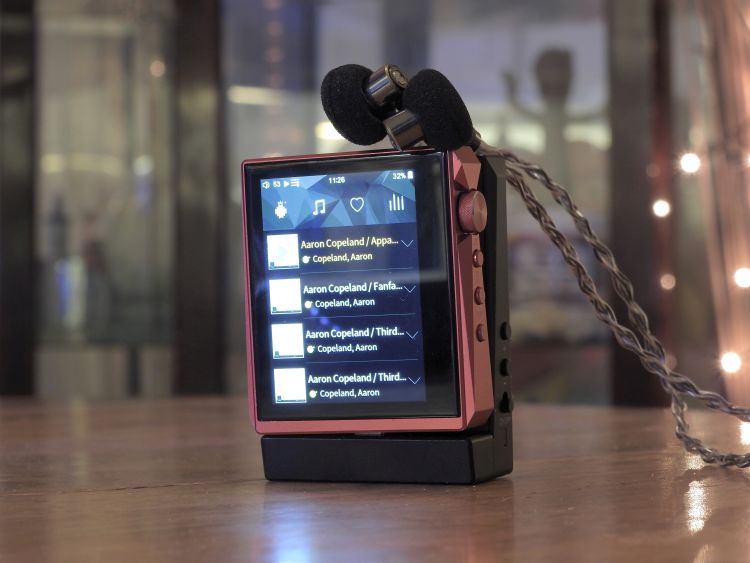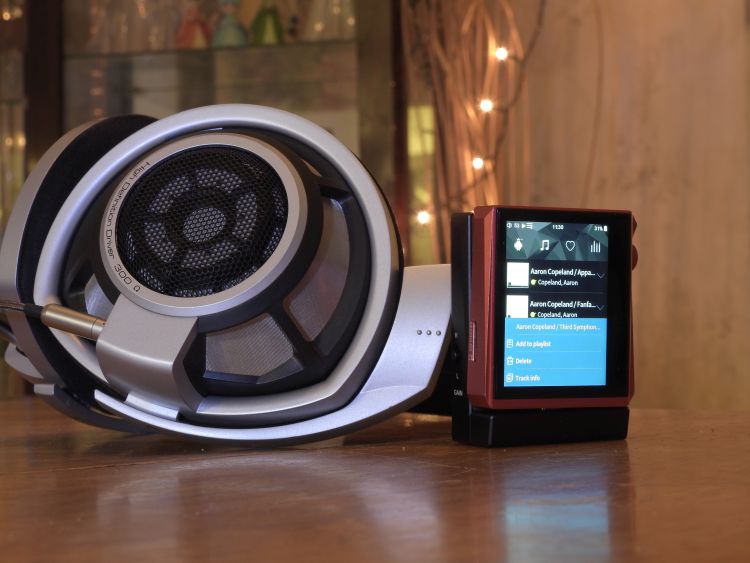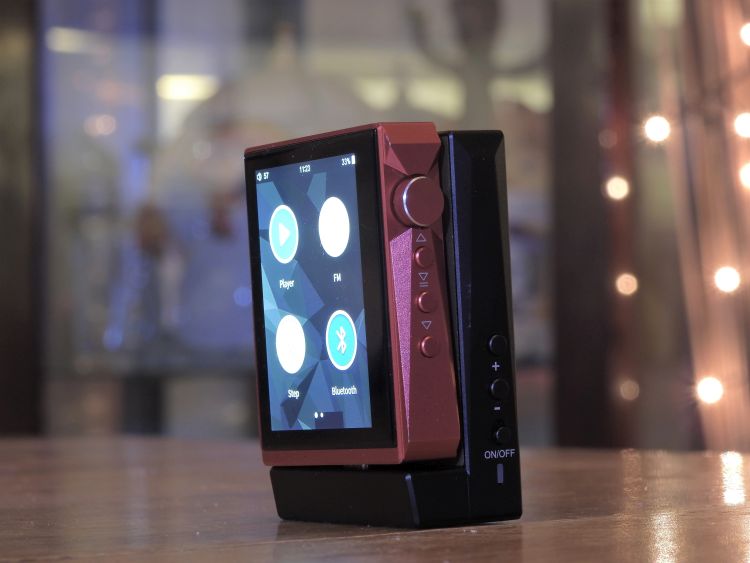The Hidizs DH80 is a portable balanced DAC & amp uniquely designed to cradle the company’s AP80 DAP as a direct source. It is priced at $139 but is currently at a pre-sale price of $109 until April 20th, 2021.
Disclaimer: The Hidizs DH80 sent to us is a sample in exchange for our honest opinion. We thank the team at Hidizs for giving us this opportunity.
To read more about Hidizs products we reviewed on Headfonics click here.
Note, this review follows our new scoring guidelines for 2021 which you can read up on here.
The Hidizs DH80 is a $139 amplifier output device that connects to the AP80 series, lending it much better audio quality and driving power. With all the DAC’s out there that can connect via USB to the portable DAP of your choice, it is nice to see Hidizs making their own little amplifier that is dedicated for usage with the AP80 system.
Design
I was sent only the DH80, which is different from the DH80S in terms of application. However, I am told that they are both made of the same aluminum material and I rate it very good in build quality. The DH80 feels really heavy even before connecting the AP80 to it and essentially doubling the weight.
The DH80 has a resting dock-like USB connector sticking up that you impart the AP80 DAPs into. The two stick together with included magnetic plate disks. However, the DH80S is an exterior semi-replicated AP80 but that is a pure amplifier in design and size, so it is more like stacking two AP80s on top of each other and using a normal USB C to C connector/cable between them.
The standard DH80 has no need for cables and directly plugs into the AP80’s USB C port. The buttons are firm and sturdy, I feel no excessive jiggle or poor craftsmanship here. Also, the power and gain toggles give a satisfying click.
Overall, the build is excellent, solid aluminum. I like how Hidizs thinks outside the box here with this design, I further enjoy that the build is actually that good as well.
Accessories & Variants
These DH80 models come in few different colors, but none of them include the adapter for the Balanced output. They have decided not to use a 2.5mm balanced cable adapter option, which I vastly prefer.
Is it a big deal? Well, maybe, if you are like me and do not have the adapter for this. I had to shell out another $11 for a low-tier Amazon balanced 4.4mm adapter to a 2.5mm adapter…which is funny because I just had to buy a balanced 4pin XLR to female 2.5mm balanced so I can test the CEntrance M8v2. Ha! Sigh.
It is fine really, just make sure you are prepped before you buy this if you don’t have any audio cables for your headphones that have a 4.4mm balanced connector. The only accessory you get is a USB-C charging cable and the magnetic disk that keeps the DH80 tightly adhered to the body of the AP80.
Sound Impressions
DAC & Power
The ESS9281C is something I have not really experienced before, but I can safely say that I enjoy this DAC. What I am hearing is not at all clinical or metallic in tonality. It is a rather more warm and lush feeling than I had expected.
The vividness factor is excellent on this and a noticeable improvement over just using the AP80Pro by itself. More so, you get 210mW+210mW @32Ω in balanced mode. That is actually rather good vs the AP80 pro’s 190mW + 190mW@32Ω.
In this case, the added power is not so much the thing that really impressed me. My headphones are being properly fed with this DH80 and you can physically feel it. Swapping between just the AP80Pro and then the AP80Pro with the DH80 equates to a powerful, firm feeling to everything. The thickness and weight fact are significantly increased with the full combo unit in action.
This DAC really improves the overall fidelity over just the AP80Pro alone and I consider that wildly impressive and something I would actually pay for to keep the size this compact.
No, you cannot power inefficient planar headphones with this very well, but you can get by. Roughly 0.5w is a good start. For 32 to 300Ω headphones though, like my Sennheiser HD800, I feel more than powered enough to enjoy the HD800 on the go.
Remember the price of this DH80 is only $139, you can achieve good things with this and the extremely expensive HD800. Amazing.
Bass
Truly, the AP80 MSEB system allows for excellent bass alteration. Combined with a bit more output power in balanced mode and also a tonality heft, the low end of this rig is phenomenal.
In fact, I dare to call it bass head-worthy. Running through off the Beyerdynamic T5vs2 has been quite stellar. I am listening to Tim Henson and his band Polyphia, please check them out if you have not, their New Levels New Devils album is ungodly amazing.
They have a very nice low-end presence via this DH80 rig, and it just makes me happy to sit around and enjoy soft impact and also deep-reaching bass. I really dislike snappy harsh clinical bass. Very much prefer soft, warm, fun, and musical vs cold, sterile, harsh, metallic, impacting. But that is just me and my subjective preference.
As a reviewer, I rate the bass tonality as into the warm area. Not too much, but a step or two in the direction I love. Seriously, I really enjoy this a lot. It meshes really well with the clean-sounding Empire Ears Zeus. This rig costs maybe $260 in the bundle with the AP80, and that is really saying something in the context of meshing well with a high-end custom monitor.
Bass Response
Yes, you can EQ the bass on the source player and have it reflected in the DH80. Thankfully, one of the highlights of this DH80 is its low-end responsiveness to alteration and EQ’ing.
What I think is funny is that the stock AP80Pro by itself responds less well to its own bass boosting toggles than it does digitally outputted to the DH80. So yep, chalk that up to a win for me and those who enjoy musicality and prefer a bit of oomph down yonder.
This DH80 plays so well with bass that I have shelved my more expensive higher-end DAPs entirely. Sometimes, it is okay to sacrifice fidelity for musicality and fun-factor. True, the more expensive products sound cleaner and purer, but they lack the fun factor I am having with this DH80.
Midrange
Well, as mentioned, the entire spectrum of sound feels thicker, more vivid, and more weighted than just using any of the AP80’s alone. This really helps with the HD800’s natural thinness factor, you can actually feel and hear the thickness increase through the DH80 rig combo. I am quite amazed by the implications of this DAC being used in the right manner.
This is not a widely used DAC chipset in DAPs or DACs. Yet, the way Hidizs has designed it really does seem like a winner. I would love to see what they can do with a much more expensive portable music player in the style of the older AP100, but with this newer DAC or maybe even a better one that sounds just as nice in vividness.
Weight and solidity are something I desire for vocals. I do not want my Jazz albums to sound razor thin. In fact, I do not care that they were recorded that way. Subjectively, I want that heft increased so my ears do not bleed or get fatigued.
Vocal Heft Factor
There are times I want that exaggeration and times I do not. When I am reviewing a rig that is clinical, I want that exaggeration gone. When I am enjoying a warm and fun rig, I want that exaggeration from and center.
For performance vocals, like Sinatra, or Bublé, or similar, this is an excellent budget option. I cannot stress that enough. Do you own one of the portable Audio Technica ESW series headphones? Or, perhaps something regarded as amazing for slow-paced vocal tracks? Look no further, this is a great pick.
This is not the thing I would recommend if you preferred a clinical, more neutral sound signature. If I had a gripe, it is found in the upper midrange that lacks some energy that I would prefer, but I can get that with some EQ and the right headphone. Truly, some of my headphones just lack that sparkle and feel a little too soft at times.
Treble
The entire upper side of this DH80 feels reserved, soft, and fatigue-free. Dropping in my Starfield IEM’s, I get a sense of smoothness, but lacking engaging impact.
Sometimes, I prefer a little more bite than what is offered here but as mentioned, the MSEB system will fix that quickly. I am talking about stock flat EQ, or disabled entirely, the natural sound of the DH80 is just a bit reserved up top and I suspect that is so it can play with most products well.
Hidizs is fully aware that their EQ system on the AP80’s are amazing, so you can achieve that needed extra top end if very easily.
The impact factor is on the low-low end of moderate and can be used with excellent treble headphones for hours. As mentioned, I run the HD800 out of this for hours and do not feel the need to take a break. I sometimes sit at the part with this rig for hours on end and just forget I am even listening to a headphone that is known for harsh treble.
If I want it to be harsh with the DH80, I can make it so. But I am happy to report that physical slam is still engaging enough to be fun, but never overbearing or painful. That wince factor is my least favorite sonic trait…but, thankfully the DH80 and AP80 combo make that a non-issue.
Imaging
I don’t feel a lick of a difference between the AP80 and the DH80’s imaging prowess. They both feel similar to my ears no matter what headphones I am using. I regard this rig as good and more than acceptable in sound staging offered, but nothing utterly amazing or special.
If Hidizs can improve anywhere, it is in the vastness of the imaging provided. But, at this price, I do not fault them at all and do not take points off. The DH80 is fairly cheap by today’s standards and what it already offered is so fun to me, that I do not really care.
Even with the HD800, I still do not care that I am missing out on some sound staging if I were to swap out for something like the CEntrance M8V2.
But, that thing is $800 or so and seems unfair to compare. What I can safely say is that most of the budget tier DAPs will not sound as good as this pair will and if I were spending sub $250 or so for both a DH80 and an AP80, this would be the only rig I would be buying.
I cannot fault it for having simply good imaging and average vastness for such a price. It is easy to sense that nothing is lacking in the sound staging properties of the DH80, width is on par with height, depth of field is very nice, and realism is good when the price tag is considered.
Nothing is overly wide or excessive compared to any other field of the image and that means it is coherent. Just like the stock AP80’s were all coherent and very well set up, despite not extending too much in imaging property.
Our Verdict
Yea, I really like the Hidizs DH80. It is small, powerful, fun, and offers a solid and audibly fidelity upgrade versus just using the AP80 alone.
My one gripe is the magnet piece that is supposed to keep the player firmly attached to the body of the DH80. It wiggles. And I had to add another audio rubber band (from another product) just to keep everything in position.
This is not a great thing for you if you are out running, odds are good the connection will loosen and the AP80 will pop off the USB C port mount. But this is great for walking and sitting. It is on the fun and thick side, without going too far.
The sound is reserved in physical bite factor but feels smooth. With a small AP80 treble bump, you get a really fleshed-out powerhouse of a portable rig that is so small still. Enjoyed this a lot, even if I had to buy a 4.4mm adapter.
Hidizs DH80 Specifications
- Dimensions 70×50×12mm
- Net Weight DH80: 82.3g / DH80S: 76g
- MQA Support
- Gain Switch High / Medium / Low
- Sampling Rate Indicator Light Support
- Independent Volume Control Support
- DAC Chip ESS ES9281C PRO
- Sampling Frequency Up to 32Bit/384Khz
- DSD Up to 128
- Op Amp RT6863C ×2
- Power Connector Type-C
- Battery 1300mAh 3.7V Li-Polymer Battery
- Charging Time About 2.5 hours
- Battery Life Balanced: about 6 hours / Single-ended: about 8 hours
- Supported Systems Windows 10, Mac OS, iPad OS, Android, iOS, or newer systems
- (For iOS users, the Lightning OTG cable has to be purchased separately)
Analog Output Parameters
| PO(3.5mm) | BAL(4.4mm) | |
| Test Conditions | @32Ω Load | @32Ω Load |
| Maximum Output Power | 125mW+125mW | 210mW+210mW |
| Frequency Response | 20Hz-80kHz (±0.6dB) | 20Hz-80kHz (±0.6dB) |
| Total harmonic distortion + Noise (THD+N) | 0.0006% | 0.0004% |
| SNR | 116dB | 116dB |
| Crosstalk | 79dB | 108dB |

